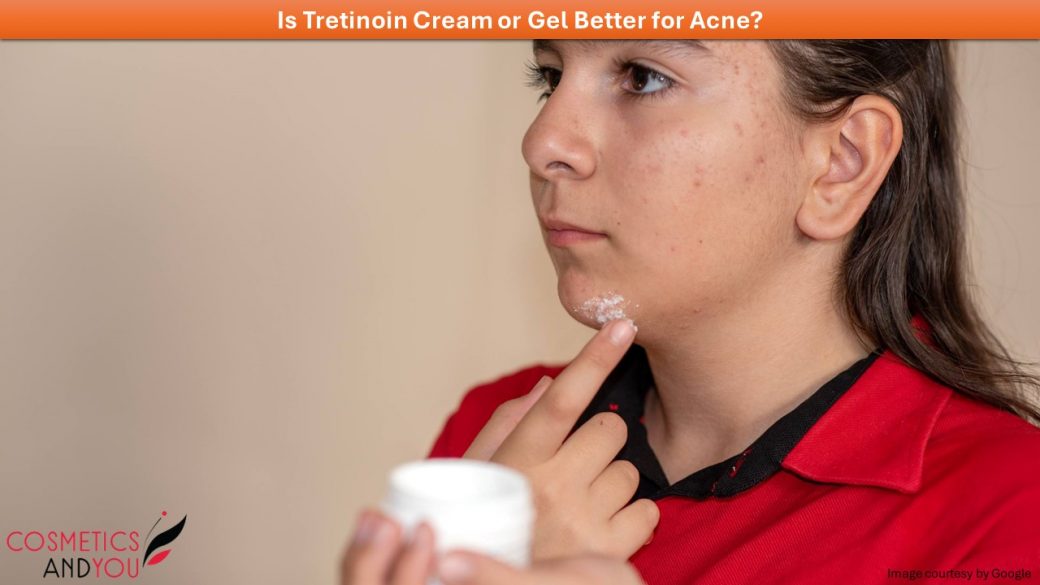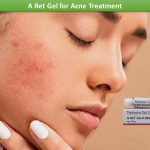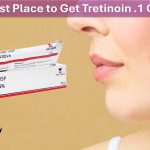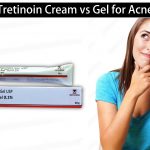Tretinoin is a popular medication for many skin conditions, especially acne and photoaging. It is available in two formulations: cream and gel. Each preparation has unique benefits and properties, making choosing one for your specific requirements easy. In this article, you will be able to explore the differences between gel and cream formulations and provide information on how to pick the right product for you.
Also known as zits and pimples, acne is very common. More than 80 percent of individuals suffer from acne vulgaris at some point in their life, usually as teenagers. It develops when the skin’s oil glands become plugged up. In most cases, acne occurs due to hormonal changes. In teenagers, the number of hormones released by the body increases. This increases the size of oil glands and causes them to produce sebum (oil). This oil spreads all over the facial skin, so teenagers complain of oily skin. Blackheads are one of the forms of acne that occurs when the oil and dead skin cells block the skin’s pores.
Sometimes, plugged material becomes trapped under the skin, and the air cannot reach it, ultimately forming whiteheads or pimples. Pimples develop whiteheads, rupture, and become reddened sores. Bacteria feed on the oil and weaken the wall of the oil gland. They split the fat into fatty acids that can irritate the skin and contribute to pimple formation. If the pimples are deeper into the skin, a severe form of acne called cysts may form. Most breakouts occur on the facial skin, neck, and back because these are the skin areas that have the most oil glands.
Tretinoin cream: The basic
Tretinoin cream contains the active ingredient tretinoin. This cream is generally thicker than the gel, offering more moisturization and hydration to the skin. This makes it suitable for dry or sensitive skin that may develop irritation from the gel formulation. One of the advantages of tretinoin cream is that it leads to faster and more noticeable results, especially in treating moderate to severe acne. However, it is also important to note that a tretinoin formulation may be more likely to cause skin irritation, especially during the initial stages of treatment. Furthermore, it is often recommended that individuals with mature skin who are looking to improve the appearance of wrinkles, fine lines, and age spots. The thicker the consistency, the better it allows the absorption and retention of moisture, which can help plump up the skin and minimize the visibility of these signs of aging.
Properties of tretinoin gel
Tretinoin gel is a water-based formulation that contains alcohol or other drying agents. It has a more fluid consistency than cream. Gels are more appealing as they are quickly absorbed into the skin, delivering the active ingredients more rapidly. The gel-based formulation is generally recommended for individuals with oily skin. Tretinoin gel provides a matte finish, making it suitable for individuals who like a nongreasy feel on their skin. The lighter texture of the product is extremely beneficial for those who want to apply makeup or skincare products immediately after using the tretinoin formulation.
Tretinoin gel is particularly effective in treating acne as it helps to unclog pores, regulate sebum production, and reduce inflammation. This way, the gel formulation can help prevent the formation of new acne and promote clearer skin over time.
What’s better: Tretinoin cream or gel?
Well, the truth is that there is no better or worse when it comes to tretinoin usage. It all depends upon the needs of your unique skin type.
One of the most important aspects of treating tretinoin is following the dermatologist’s advice. Many users see improvement in their condition within a few weeks of using the tretinoin formulation. So be patient, do not discontinue treatment without consulting the dermatologist, and take good care of your skin by using good quality moisture and protecting it from sun exposure as you continue to get the path of healthier skin. You can buy a-ret gel online from cosmeticsandyou at affordable price.





